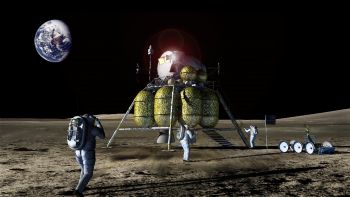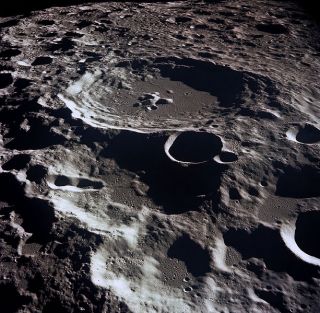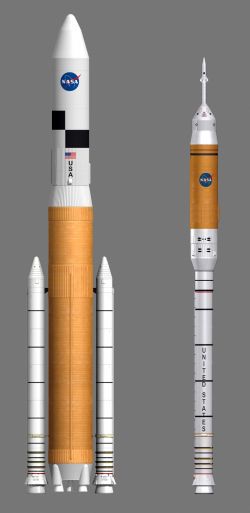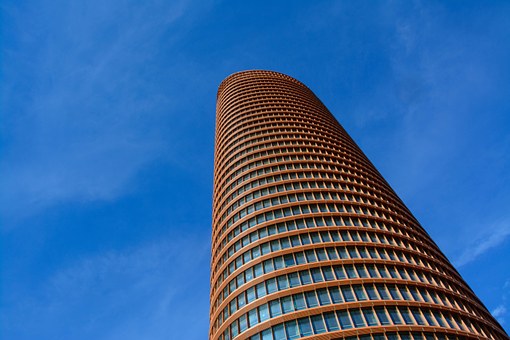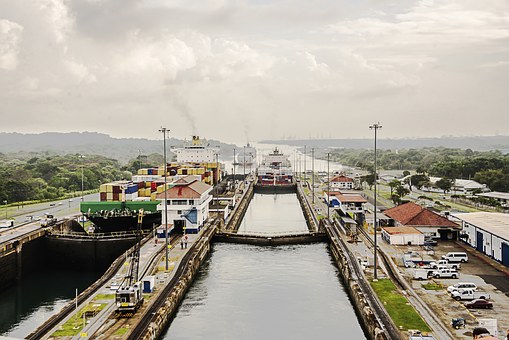Establishing a colony on the moon would force scientists and engineers to solve extremely complex design problems but would open doors to further exploration into our galaxy and beyond. In order to establish a lunar colony, scientists and engineers would need to develop new lunar structures as well as determine a way for the lunar settlers to have enough vital resources to survive. In spite of the challenges at hand, we could feasibly see a colony on the moon in our lifetimes.
Living on the Moon
Living on the moon has been a part of science fiction for years, but isn’t something most people think they will see in their lifetime. Establishing a settlement on the moon would force us to confront radically different design challenges than those we typically face here on Earth. But a colony on the moon would offer access to resources and energy production that we are unable to harness on Earth and could be a stepping stone to further exploration of our galaxy and beyond.
The lunar soil (or regolith) contains an abundance of natural resources including iron, aluminum, silicon, titanium, oxygen, and small amounts of carbon, helium 3, and nitrogen. This mineral supply is large enough for a lunar settlement to eventually become self-sufficient after extraction and mining techniques are sufficiently refined. These minerals could also potentially be exported back to the Earth for use [1].
The excitement about energy prospects on the moon has many corporations looking into the possibility of traveling back to the moon. At the poles of the moon, there is nearly constant sunlight that would allow for continuous generation of solar energy, which could be used on the moon or possibly converted to microwaves and sent back to Earth. The lunar soil also has a relatively high abundance of Helium 3, which is thought to be the key ingredient for energy generation through fusion [2]. While still theoretical, fusion is seen as a safer and more sustainable method for generating nuclear power, and Helium 3 is believed to be an environmentally friendly candidate for powering these fusion reactors [11]. The possibilities for energy generation from resources found on the moon are some of the biggest reasons that a lunar colony is being explored.
In order to further explore nearby planets, the depths of our galaxy, and potentially beyond, the moon is the logical first stop and could be a test site for new technologies as well as the launching point for deep space missions. The reduced gravity on the moon allows vehicles to escape its atmosphere and gravitational pull using less energy, making deep space travel easier and more cost-effective. Additionally, a telescope or observatory on the far side of the moon would allow researchers to look deeper into the galaxy than ever before. These telescopes would produce images—similar to the ones produced by the Hubble Space Telescope—that are much clearer than pictures taken from Earth because the moon does not have an atmosphere like Earth’s to scatter light [1].
Establishing a colony on the moon would require different stages of development before a permanent settlement could be established. The first astronauts to travel back to the moon since the Apollo missions of the 1960s and 1970s would bring along the supplies and materials necessary to establish a presence on the moon. Initially, astronauts would live and work out of the moon lander used to travel to the moon, as in Fig. 1. These astronauts would begin building more permanent lunar structures that rely on resources brought from Earth for survival [3]. Ultimately, the goal would be to develop the capability to construct and maintain structures solely from resources collected or produced on the moon. In all stages of this process, engineers must develop unique strategies that can stand up to challenges of transportation, resource management, and infrastructural development.
Resource Requirements
The obvious first challenge of establishing a settlement on the moon is the absence of many of the resources necessary for our survival. The first lunar settlers will have to bring most of these materials with them, but eventually, for a lunar settlement to be viable, these resources will have to be collected or generated on the moon. The most important supplies and utilities would include water, breathable air, food, and energy.
In the past five years, NASA has found undeniable evidence of water on the moon that originated either from water-bearing comets crashing into its surface or from the moon itself [2]. In order to extract this water from the lunar surface, the astronauts would have to dehydrate and rehydrate the soil. “Gray water” systems or extensive recycling of water would be necessary to limit the amount of water that would have to be extracted from the lunar soil or brought from Earth. Lunar settlers could also use algae to filter their water, in addition to consuming algae as a nutritional protein source [4].
In addition to water, the lunar soil also contains a large amount of oxygen that would be a byproduct of any water extraction operations. Breathable air would also be a byproduct of any hydroponic farms—in which plants are grown in mineral solutions instead of soil—set up to grow food for lunar settlers. Hydroponic farming would provide fresh fruits and vegetables for people living on the moon, and the plants would filter the CO2 expelled by human settlers and convert it back to breathable air through photosynthesis [4][5].
The majority of energy required by a lunar colony would likely come from solar energy. The moon receives an almost constant stream of sunlight at its north and south poles, meaning that a lunar colony could rely almost completely on solar energy. Enough energy could be generated that the surplus could be converted to microwaves and sent back to Earth. The lunar soil also possesses a relatively high level of Helium 3, a rare gas used in fusion, and just 50 kilograms of the gas could power the city of Atlanta for a whole year while producing very little waste, should nuclear fusion become feasible in the future [6].
Habitat Requirements
Designing a habitable space for a lunar settlement would be drastically different from designing a structure here on Earth. Any dwelling on the moon would need to be pressurized and pumped full of breathable air in order to make it livable for humans. Most of the structures on Earth are designed to withstand the forces and weights due to Earth’s gravitational pull pushing down on them, while the structures on the moon would need to be designed to withstand a strong upward force from the high pressure inside the habitat necessary to create the pressurized environment needed for humans to survive. In addition, the habitats would have to be designed to be airtight and to protect its inhabitants from radiation and drastic temperature changes. Additionally, before the structures can be built from local materials, they will have to be light enough to be efficiently transported to the moon and easily constructed by the astronauts.
One of the most talked-about options for a lunar habitat is an inflatable structure. This structure could be either spherical or pillow-shaped and would self-inflate in several hours. Because of the strong outward force created when the living space is pressurized, the inflatable habitats allow for an optimized living space while still using lightweight materials [7]. However, the inflatable environments offer little protection from radiation and the other hazards of living in space. For this reason, the habitats would ultimately need to be covered in a layer of lunar soil up to five or six feet thick. This layer would protect the lunar settlers from solar radiation, offer some insulation from the drastic temperature shifts, and protect them if small meteorites or other debris struck their habitat [1].
Another popular option for building a habitat on the moon is to build a settlement inside one of the many craters on the moon (some of which are pictured in Fig. 2) or in one of the lava tubes that exist below the surface. Both options would provide natural protection from solar radiation and meteorites, and more easily maintain a more constant temperature than the surface of the moon. Inside the lava tubes, inflatable structures similar to the ones built on the lunar surface could be erected or domes could be built to enclose a crater. This could allow the inhabitants to carve living spaces out of the crater walls and potentially use the crater floor for agriculture, research, and storage [1].
Other proposed options for lunar habitats include rigid arch structures and “erectables.” Rigid arch structures are an appealing option for construction on the lunar surface because of their extensive implementation on Earth. The arches could be made with hinged connections and transported to the moon in prefabricated parts to ease construction. In the case of “erectables,” the pieces could be brought into a low Earth or moon orbit where the main skeleton of the structure would be built. Once the structure is completed, it would be “shipped” to the moon [7]. A rigid arch structure would be heavier and thus more costly to transport to the moon, but “erectables” may present a more cost-efficient option [1].
As our lunar colonies expand, a need may emerge to travel long distances on mining or exploration missions, in which case a large, pressurized lunar rover will need to be developed. These lunar rovers would support the explorers for extended periods of time and allow them to travel hundreds of miles without returning to the main settlement. One proposed rover has space suits attached to the back that act as the rear door and allow the explorers to easily get into their suit to closely examine the lunar surface and to gather samples [6].
Transportation Requirements
The hardest part of establishing a lunar colony will be actually travelling back to the moon. It takes an enormous amount of energy to get outside of Earth’s gravitational pull and thus is incredibly expensive. In 2004, President George W. Bush introduced a space exploration initiative, with one of its many goals to establish a moon base. The Constellation Program was shelved in the 2011 United States federal budget, but before it was cancelled, the program was able to develop a two rocket system to transport astronauts, equipment, and materials to the moon [6][8].
As part of the Constellation Program, the Ares I rocket (Fig. 3) was being designed for human transport and would be the first rocket to launch for a moon colonization mission. The rockets designed to send humans and equipment into space involve multiple stages and multiple rocket boosters. The first stage of the Ares 1 rocket is very similar to the rocketry used on a space shuttle, but the Ares 1 component is taller in order to give it more power. The second stage of the Ares 1 rocket is an updated version of the rockets used during the Apollo missions of the 1960s and 1970s [6].
The Ares V rocket (Fig. 3) would theoretically launch soon after Ares I. It was being designed to carry all the equipment and materials needed to establish a lunar colony. The Ares V is powered by two of the same larger Space Shuttle rockets used on Ares I, as well a cluster of five main engines based off the rockets used for the large Delta IV rocket. The Ares V would be over 350 feet tall, making it the largest rocket ever built [6].
By the time it achieves orbit around the Earth, the Ares I would drop both of its main rockets and would include only the Orion capsule that contains the astronauts. The Orion capsule would then deploy solar panels to power its instruments before docking with the Ares V rocket. The maneuver, called Rendezvous, would require the Orion capsule to be expertly flown and aligned with the end of the Ares V. Once the two are joined, the Ares V rocket would fire one more time, accelerating the ship to speeds of over 24,000 miles per hour and sending the astronauts and their equipment to the moon. Four days later the astronauts would arrive at the moon, where they would most likely land near the south pole and the Shackleton Crater [6].
Once on the moon, transportation will be a key factor in establishing a successful lunar colony. The lunar soil and the reduced gravity on the moon reduce the traction between a wheeled vehicle and the soil. With less traction, vehicles have a higher risk of getting stuck, and more energy will be required to move the vehicle. In addition, the Apollo missions demonstrated that driving vehicles directly on the lunar surface throws a lot of lunar soil into the atmosphere, which is bad for machine operation and is hazardous to humans [7].
Solutions to this problem include building lunar roads, building vertical takeoff and landing vehicles, or building a lunar cable car system. Building roads would involve compacting or melting the lunar soil into a form of “lunar concrete” that could be fused to the rough surface of the moon. However, this would likely be incredibly expensive, involve enormous amounts of energy, and be very difficult to do. The vertical takeoff and landing vehicles would produce a large amount of dust during takeoff and landing, thus requiring some sort of blast protection and landing pad to protect the settlements from the hazards of the lunar soil. If there were to be multiple large settlements on the moon, this would be a more viable form of transportation, as few landing pads would have to be constructed. Building a lunar cable car system is likely to be the most effective and require little infrastructure to build [7].
Conclusion
Establishing a settlement on the moon would involve enormous costs and thus has faced many political hurdles. During the 2012 Republican Primaries, Newt Gingrich stated that he would like to build a permanent colony on the moon by 2020, which was met with ample criticism. It has been estimated that establishing a moon base would cost between 250 to 500 billion dollars [8]. Nevertheless, many countries—including India, China, Japan, the United States, and the members of the European Space Agency—are exploring the possibility of establishing a moon colony. Additionally, NASA may reach out to a private corporation for the resources required to return to the moon, as it recently offered a prize for the first commercial space craft to reach Earth’s lower atmosphere [9][10].
While the present political and economic landscapes do not provide much support for establishing a moon colony, doing so would be a huge leap forward for society and science. It would also allow us to gain a strong foothold in space and establish a foundation for further exploration and possible planetary colonization. Establishing a colony is the logical first step in sending humans to Mars and gives us access to important energy resources. Humans have been fascinated with the moon for thousands of years, the desire to tackle this challenge and travel deeper into the galaxy and beyond will ultimately be the driving force behind establishing a lunar colony.
